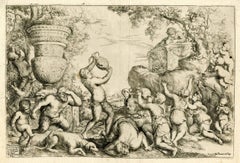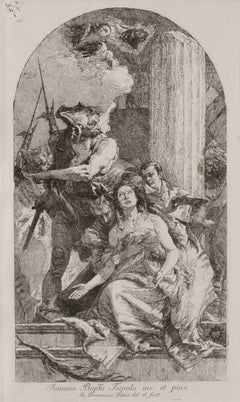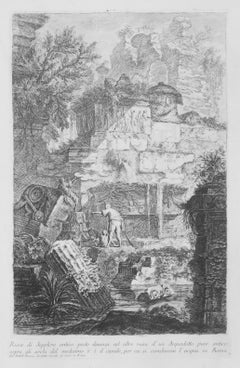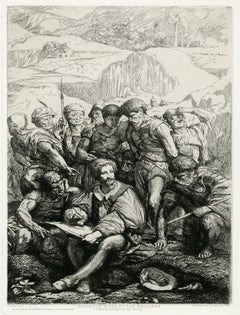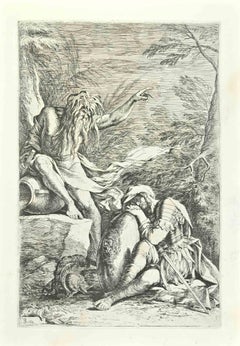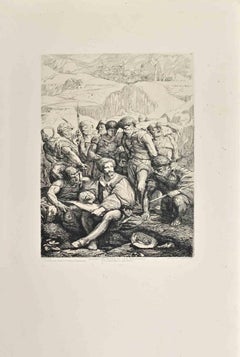Items Similar to The Academy of Plato Plato and His Disciples
Want more images or videos?
Request additional images or videos from the seller
1 of 11
Salvator RosaThe Academy of Plato Plato and His Disciplesc. 1662, printed c. 1710
c. 1662, printed c. 1710
$750
£583.93
€664.09
CA$1,078.85
A$1,185.31
CHF 619.45
MX$14,135.82
NOK 7,843.93
SEK 7,307.28
DKK 4,962.40
About the Item
The Academy of Plato
Plato and His Disciples
Etching and drypoint
c. 1662, printed c. 1710
Signed in the plate lower left
Inscribed lower left: 'In villa ab Academo attributa sua[m] Plato condit Academia Salvator Rosa Inv. Scul.' (Translation: 'In the villa given by Academus Plato founds his academy.')
Depicts a seminal moment in the evolution of learning and thought.
Condition: Very good
Horizontal crease from paper manufacture
Reference: Bartsch XX.269.3
Illustrated Bartsch XX.3 ii/II
Reference: Theodoli 1992, no. 109
Salvator Rosa (1615-1673) was born in Arenella near Naples and soon absorbed the energy and violence informing Neapolitan art, characteristics which would be apparent throughout his career. Rosa was a prolific etcher but he also produced drawings and paintings. He particularly favoured subjects taken from the classical Antiquity, such as in the present case. The print shows here the ancient Greek philosopher Plato, disciple of Socrates, founding his school of philosophy called the Academy.
“Salvator Rosa (born June 20, 1615, Arenella, Sicily, Spanish Habsburg domain [now in Italy]—died March 15, 1673, Rome, Papal States [Italy]) was an Italian Baroque painter and etcher of the Neapolitan school remembered for his wildly romantic or “sublime” landscapes, marine paintings, and battle pictures. He was also an accomplished poet, satirist, actor, and musician.
Rosa studied painting in Naples, coming under the influence of the Spanish painter and engraver José de Ribera. Rosa went to Rome in 1635 to study, but he soon c ntracted malaria. He returned to Naples, where he painted numerous battle and marine pictures and developed his peculiar style of landscape—picturesquely wild scenes of nature with shepherds, seamen, soldiers, or bandits—the whole infused with a romantic poetic quality.
His reputation as a painter preceded his return to Rome in 1639. Already famous as an artist, he also became a popular comic actor. During the Carnival of 1639 he rashly satirized the famous architect and sculptor Gian Lorenzo Bernini, thereby making a powerful enemy. For some years thereafter the environment of Florence was more comfortable for him than that of Rome. In Florence he enjoyed the patronage of Cardinal Giovanni Carlo de’ Medici. Rosa’s own house became the centre of a literary, musical, and artistic circle called the Accademia dei Percossi; here also Rosa’s flamboyant personality found expression in acting. In 1649 he returned and finally settled in Rome. Rosa, who had regarded his landscapes more as recreation than as serious art, now turned largely to religious and historical painting. In 1660 he began etching and completed a number of successful prints. His satires were posthumously published in 1710.” Courtesy Britannica
- Creator:Salvator Rosa (1615 - 1673, Italian)
- Creation Year:c. 1662, printed c. 1710
- Dimensions:Height: 18.19 in (46.21 cm)Width: 10.75 in (27.31 cm)
- Medium:
- Movement & Style:
- Period:1660-1669
- Condition:
- Gallery Location:Fairlawn, OH
- Reference Number:Seller: FA126231stDibs: LU14015513222
Salvator Rosa
Rosa was an Italian painter of the Baroque period, as well as a printmaker, poet and author of satires. He was active in Naples, Rome and Florence, and best known for his unconventional and romantic landscapes, as well as his rebellious nature. Rosa was indisputably a leader in that tendency towards the romantic and picturesque, called a proto-romantic. His landscapes avoided the idyllic and pastoral calm in the landscapes of Claude Lorrain (1600 – 1682) and Paul Bril (1554 – 1626), and created brooding, melancholic fantasies, awash in ruins and brigands. As a writer, Rosa was equally romantic in his descriptions and rebellious in his attitude towards convention. Rosa began his training in Naples, notably with his future brother-in-law, Francesco Francanzano (1612 – 1657), who trained under the influential Spanish painter, Jusepe de Ribera (1591 – 1652), who Rosa may have trained with as well. It is also said that Rosa may have trained with the Naples painter, Aniello Falcone (1600 – 1665), who was also an apprentice to Ribera. After a brief trip to Rome, he returned to Naples and began painting his wildly romantic landscapes, eventually returning to Rome after 1638 painting one of his only altarpieces, Incredulity of Thomas. Something of a Baroque polymath, Rosa pursued his talents in music, poetry, writing, etching and acting. He wrote and often acted in his own Satires, which in turn gained him the reputation of a rebel, pitting him against powerful people, such as the prominent Roman sculptor, Bernini (1598 – 1680). This partially drove him away from Rome to sanctuary in Florence, patronized by a Medici Cardinal; he started his Accademia dei Percossi, or Academy of the Stricken, were artists, playwrights and poets gathered, among them the poet-painter, Lorenzo Lippi (1606 – 1664). He then returned to Naples, where it is said he engaged in the Spanish revolt of Masaniello (1622 – 1647), with some works produced showing this influence. He finally returned to Rome around 1649, painting historical works such as, Democritus amid Tombs, Death of Socrates, Regulus in the Spiked Cask, Justice Quitting the Earth and the Wheel of Fortune. The latter satirical work raised a storm of controversy, from which Rosa, endeavoring at conciliation, published a description of its meaning, but was nearly arrested. It was about this time that Rosa wrote his satire named Babylon, under which name Rome was of course his target. Among the pictures of his last years were the admired Battlepiece and Saul and the Witch of Endor, a work painted in 40 days, full of longdrawn carnage, with ships burning in the offing; Pythagoras and the Fishermen; and the Oath of Catiline. His output in painting and satirical writing was large, and both respected and contested in its time. Rosa, the man, is romanticized in several fictional works, including novels and fully scored ballets.
About the Seller
5.0
Recognized Seller
These prestigious sellers are industry leaders and represent the highest echelon for item quality and design.
Gold Seller
Premium sellers maintaining a 4.3+ rating and 24-hour response times
Established in 1978
1stDibs seller since 2013
826 sales on 1stDibs
Typical response time: <1 hour
Associations
International Fine Print Dealers Association
- ShippingRetrieving quote...Shipping from: Akron, OH
- Return Policy
More From This Seller
View AllThe Garden of Love (after Peter Paul Rubens [1577-1640]
By Christoffel Jegher
Located in Fairlawn, OH
The Garden of Love (after Peter Paul Rubens [1577-1640])
Woodcut diptych, c. 1633-1636
Each of the two sheets is signed in the plate lower right
A posthumous impression with tiny wor...
Category
17th Century Old Masters Figurative Prints
Materials
Woodcut
Bacchanal
By Giovanni Andrea Podestà
Located in Fairlawn, OH
Bacchanal
Etching, 1649
Inscribed in the square left: "Magnificentis/simo Principi/Paolo lorda/no. II Bracci/ani Duci/Aud. P.DDD/1640; Inscribed on right: Rome apud Franciscsum Saluucium
Condition: Usual centerfolds from paper manufacture
Plate: 10 3/8 x 15 1/2"
Sheet: 11 1/2 x 16 1/2";
References:
Bartsch XX.4
Sopher Plate 145
An impression of this image is in the collections of the Philadelphia Museum of Art and the National Gallery of Art, Washington
An exceptionally rich impression in excellent condition.
From Wikipedia, the free encyclopedia
Putti as Allegory of Music
Giovanni Andrea Podestà or Giovanni Andrea Podesta (1608 - c. 1674) was an Italian painter and engraver who was principally active in Rome. His principal subject matter is children playing in landscapes with classical objects. His works show the influence of Poussin's Arcadian landscapes and bacchanals, which were ultimately derived from Titian's bacchanals.
Life
Giovanni Andrea Podestà was born in Genoa. He was formed in Genoa with Giovanni Andrea de Ferrari and Domenico Fiasella according to the information provided by the contemporary Genoese biographer Raffaele Soprani. He is also recorded as an apprentice of Giovanni Battista Paggi in 1627.
His presence is documented from in 1634 in Rome where he made drawings after the statues and ancient reliefs at the famous Giustiniani collection. These were subsequently engraved for publication in the 'Galleria Giustiniani'. The artist's career ran a course similar to that of the young Domenico Fiasella. In Rome his art evolved in contact with the works of Poussin, Andrea di Leone, Pietro Testa...
Category
17th Century Old Masters Figurative Prints
Materials
Etching
The Martyrdom of Saint Agatha
By Giovanni Domenico Tiepolo
Located in Fairlawn, OH
The Martyrdom of Saint Agatha
after the painting by his father, Giovanni Battista Tiepolo (see photo)
Etching, c. 1780
Signature: unsigned
Watermark: Letter A (similar to Bromberg 4...
Category
1780s Baroque Figurative Prints
Materials
Etching
Ruine di Sepolcro antico
By Giovanni Battista Piranesi
Located in Fairlawn, OH
Ruine di Sepolcro antico
Etching, 1743
Signed in the plate bottomleft in the caaption plate
From: Prima Parte, 1743
Second edition: 1750-1778
Watermark: R 37-39
A lifetime impression printed during Piranesi’s life, before the plates are moved to Paris by his sons in the 1790’s
Coniditon: Excellent/Very good
Image size: 14 5/8 x 9 3/4 inches
Reference: Robison 17 iii/V
Piranesi In Rome: Prima Parte di Architetture e Prospettive
"Although Piranesi studied architecture in Venice, he never was able to find work in the field other than a few jobs involving remodeling in Rome. While Piranesi was struggling to support his architectural endeavors upon his arrival in Rome in 1740, he spent a short period of time in the studio of master painter Giovanni Battista Tiepolo (1696-1770) in addition to his apprenticeship with Giuseppe Vasi. The first production of Piranesi’s early years in Rome and a culmination of his training under Vasi, Tiepolo, and his uncle, was the Prima Parte di Architetture e Prospettive (1743). The Prima Parte was a collection of twelve etchings of imaginary temples, palaces, ruins, and a prison. During this time, Piranesi was still developing the unique style of etching he is known for today, and as such the Prima Parte differs significantly in technique compared to later works. In the Frontispiece of the Prima Parte, Piranesi’s lines are definite and exact with very little flow to them, designed in the form of traditional etching. The detail is immaculate, and yet perspective of the piece is oddly simple and familiar to the viewer. Piranesi’s technique employs miniscule markings and lines, intricately woven together to create a stippling effect. The Prima Parte, described as “rigid” by art historian Jonathan Scott, came to be seen as a stark contrast to his later sketches, which were much lighter and freer. Influenced by the style of Tiepolo, which epitomized the lightness and brightness of the Rococo period, Piranesi adopted some of the more painterly techniques of the masters he apprenticed under. Piranesi made the medium of etching appear as though it was a sketch or a painting, hence a “freer” and more fluid design in his later works. For example, the frontispiece of the Prima Parte read as an etching to Piranesi’s audience, but in his later vedute, the style of etching almost appears to be made of brushstrokes. Moreover, at the same time Piranesi was working on the Prima Parte, he aided the artist Giambattista Nolli. There is a small section of Nolli’s map...
Category
1740s Old Masters Interior Prints
Materials
Etching
The Death of Lazarus
By Hieronymus Wierix
Located in Fairlawn, OH
The Death of Lazarus
Engraving, 1593
Feria VI. Post Domin IIII
From: Evangelicae Historiae Imagines, Plate 76
Condition: Excellent
Sheet size: 9 7/8 x 6 1/8 inches
Reference: Referen...
Category
16th Century Old Masters Figurative Prints
Materials
Engraving
The Infant Christ and St. John Playing with the Lamb, after Peter Paul Rubens
By Christoffel Jegher
Located in Fairlawn, OH
The Infant Christ and St. John Playing with the Lamb,
after Peter Paul Rubens (1577-1640)
Woodcut, trimmed and tipped to support
Initialed in the block bottom ...
Category
1630s Old Masters Prints and Multiples
Materials
Woodcut
You May Also Like
Salvator Rosa et les Brigands; ..L'Art adoucit même les plus féroces
Located in Middletown, NY
"Art softens even the most ferocious."
Paris: Cadart & Luquet, 1865.
Etching and engraving on Chine-collé mounted to watermarked Aqua-Fortistes cream laid paper, 12 1/2 x 9 1/2 inc...
Category
Mid-19th Century French School Landscape Prints
Materials
Handmade Paper, Engraving, Etching
Dream of Aeneas - Etching after Salvator Rosa - 18th Century
By Salvator Rosa
Located in Roma, IT
This etching, representing The Dream of Aeneas, is an 18th century proof after Salvator Rosa (ca. 1663).
Signed lower left “S.Rosa”
The state of preservation is good. Some foxings ...
Category
18th Century Old Masters Figurative Prints
Materials
Etching
Salvator Rosa et les Brigands - Etching by François Chifflart - 1860s
Located in Roma, IT
Salvator Rosa et les Brigands is a black and White etching realized by François Chifflart in the 1860s.
Titled in the lower
Image Size: 31x23
Very good impression.
Realized for ...
Category
1860s Modern Figurative Prints
Materials
Etching
Salvator Rosa at the Brigands - Original Litho by A.P. Riffaut After Guignot
Located in Roma, IT
Salvator Rosa at the Brigands is an original artwork realized by Adolphe Pierre Riffaut in 1844. Original lithograph on paper after A. Guignot.
Artist's proof before Letter. Passepa...
Category
1840s Figurative Prints
Materials
Lithograph
The Last Supper, from The Passion of Christ
By Hendrick Goltzius
Located in Middletown, NY
Engraving on cream laid paper, 8 x 5 3/8 inches (203 x 137 mm), trimmed at the platemark. A fine impression with a Coat of Arms watermark. Second state, after the addition of the Frederick de Witt...
Category
16th Century Old Masters Figurative Prints
Materials
Laid Paper, Engraving
Four Soldiers, one with Flag - Etching after Salvator Rosa - 18th Century
By Salvator Rosa
Located in Roma, IT
This etching, representing Four soldiers, one with flag, is an 18th century copy after Salvator Rosa and it is from the series of capricci with soldiers, called Figurine.
The first ...
Category
18th Century Old Masters Figurative Prints
Materials
Etching
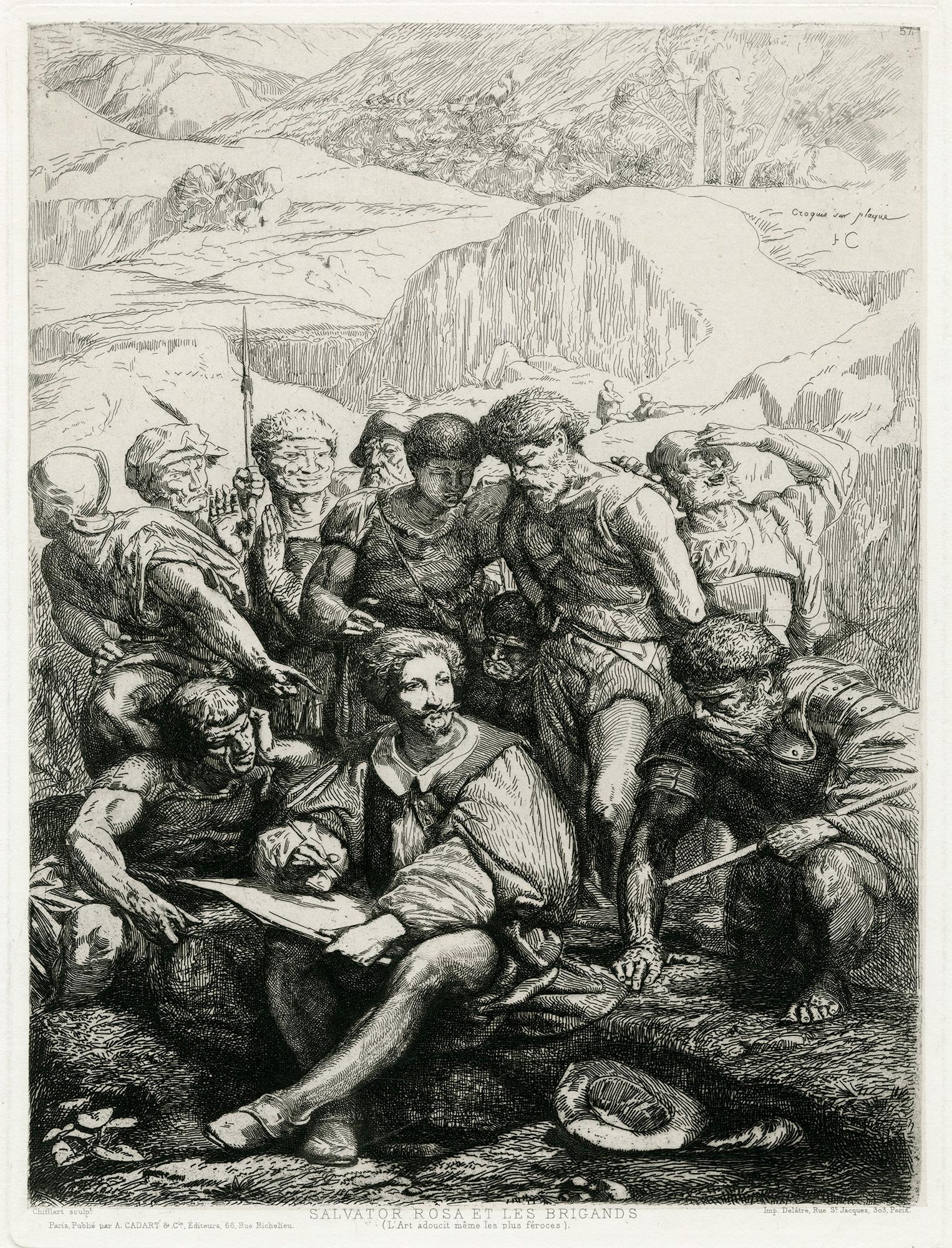
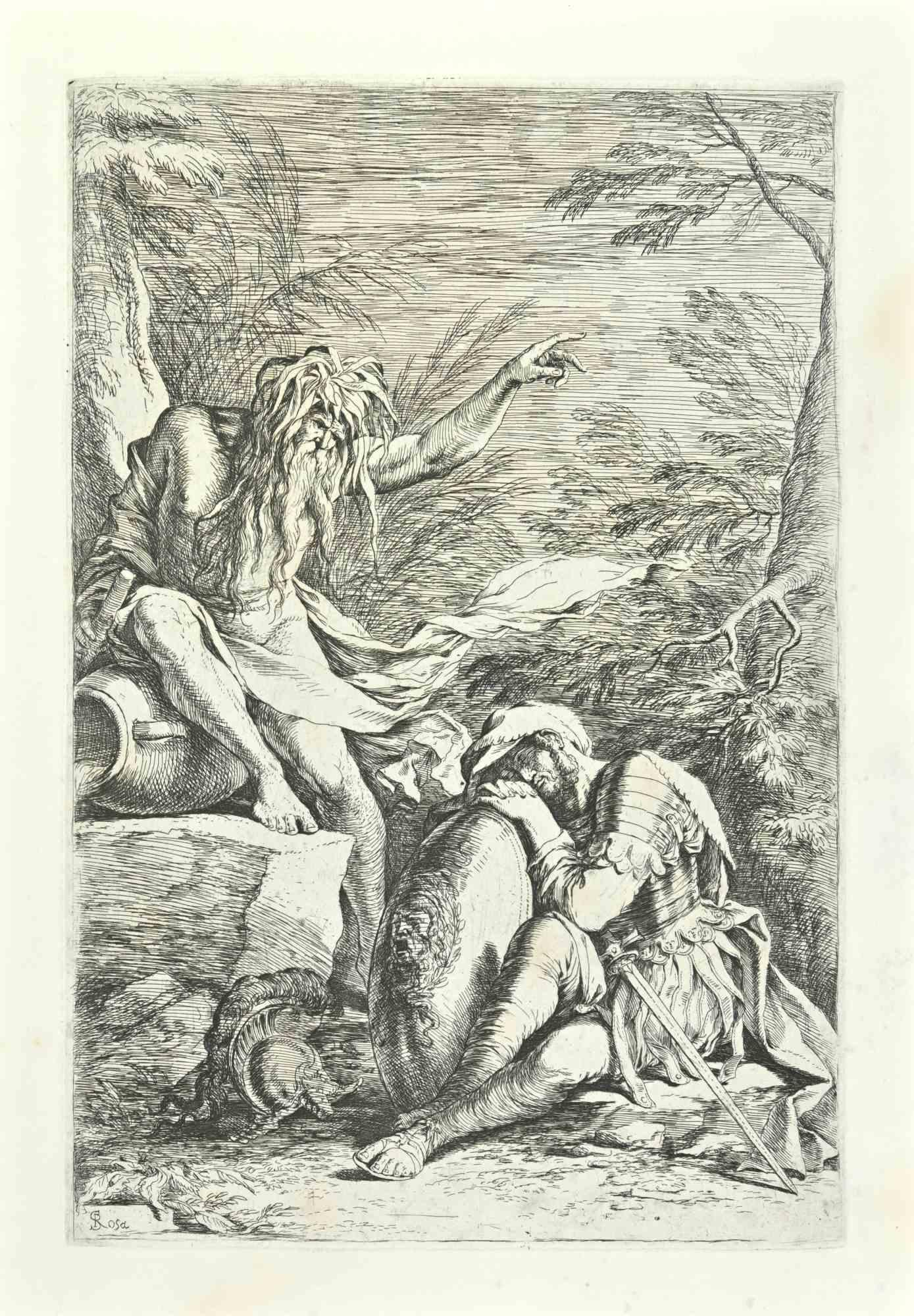
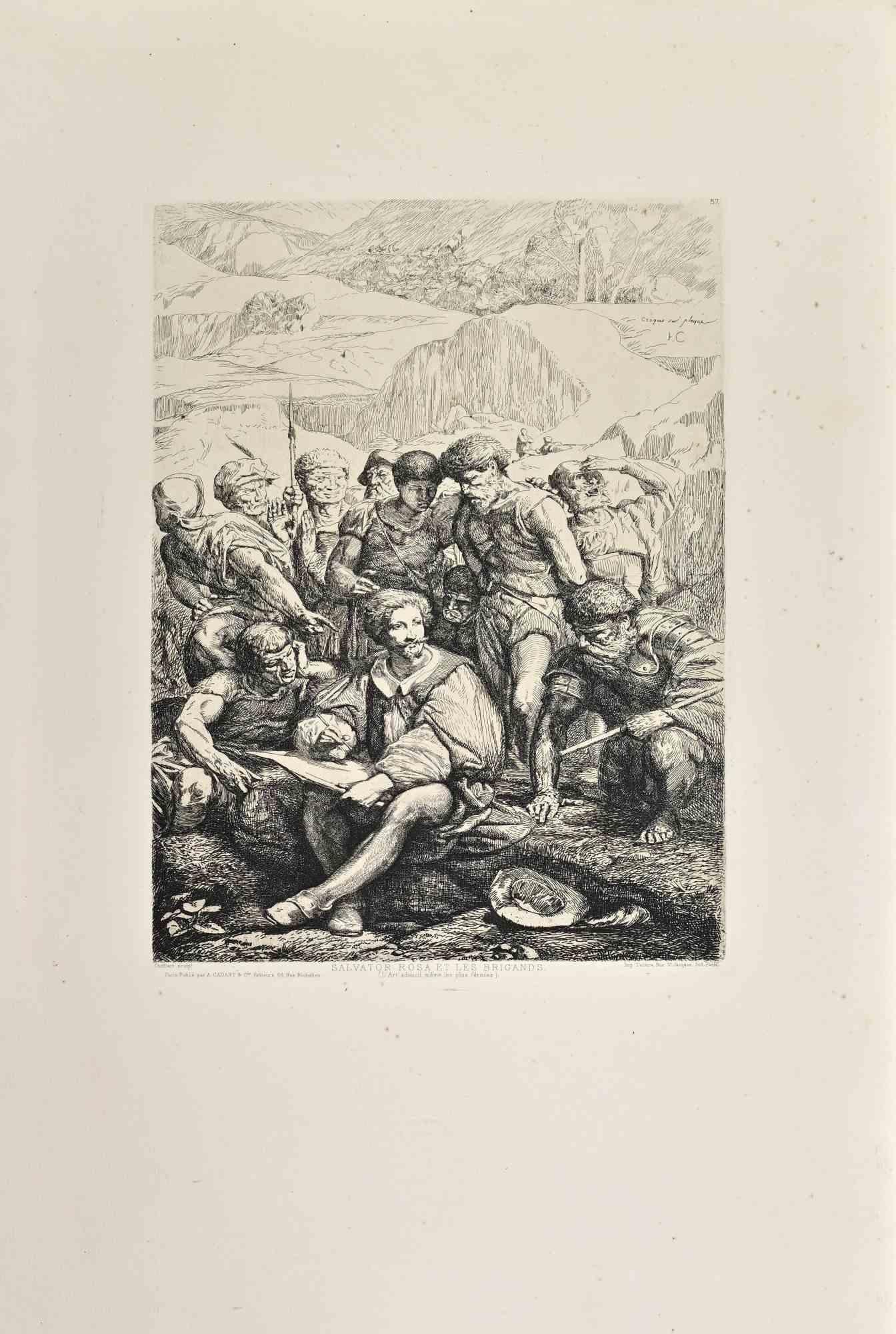
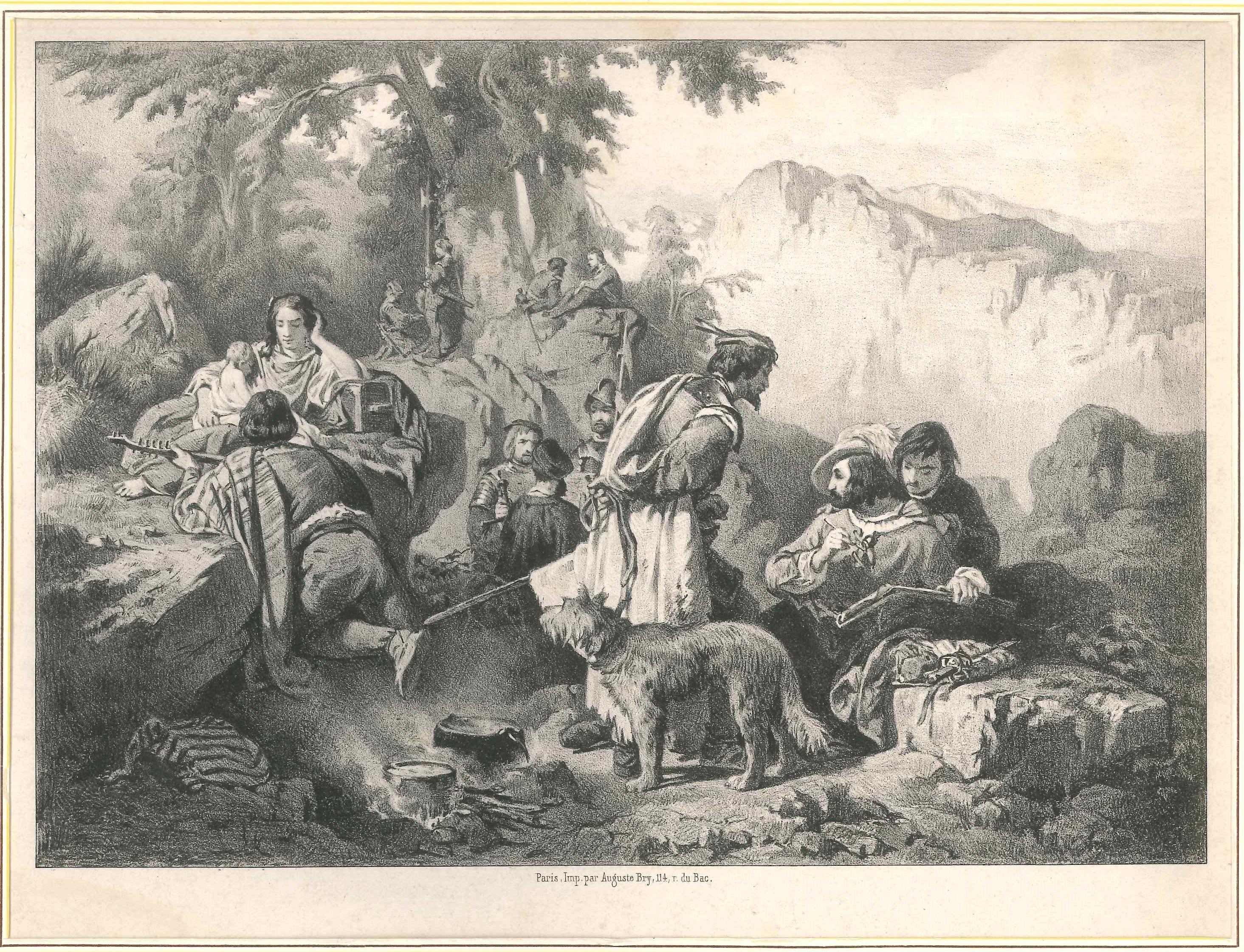
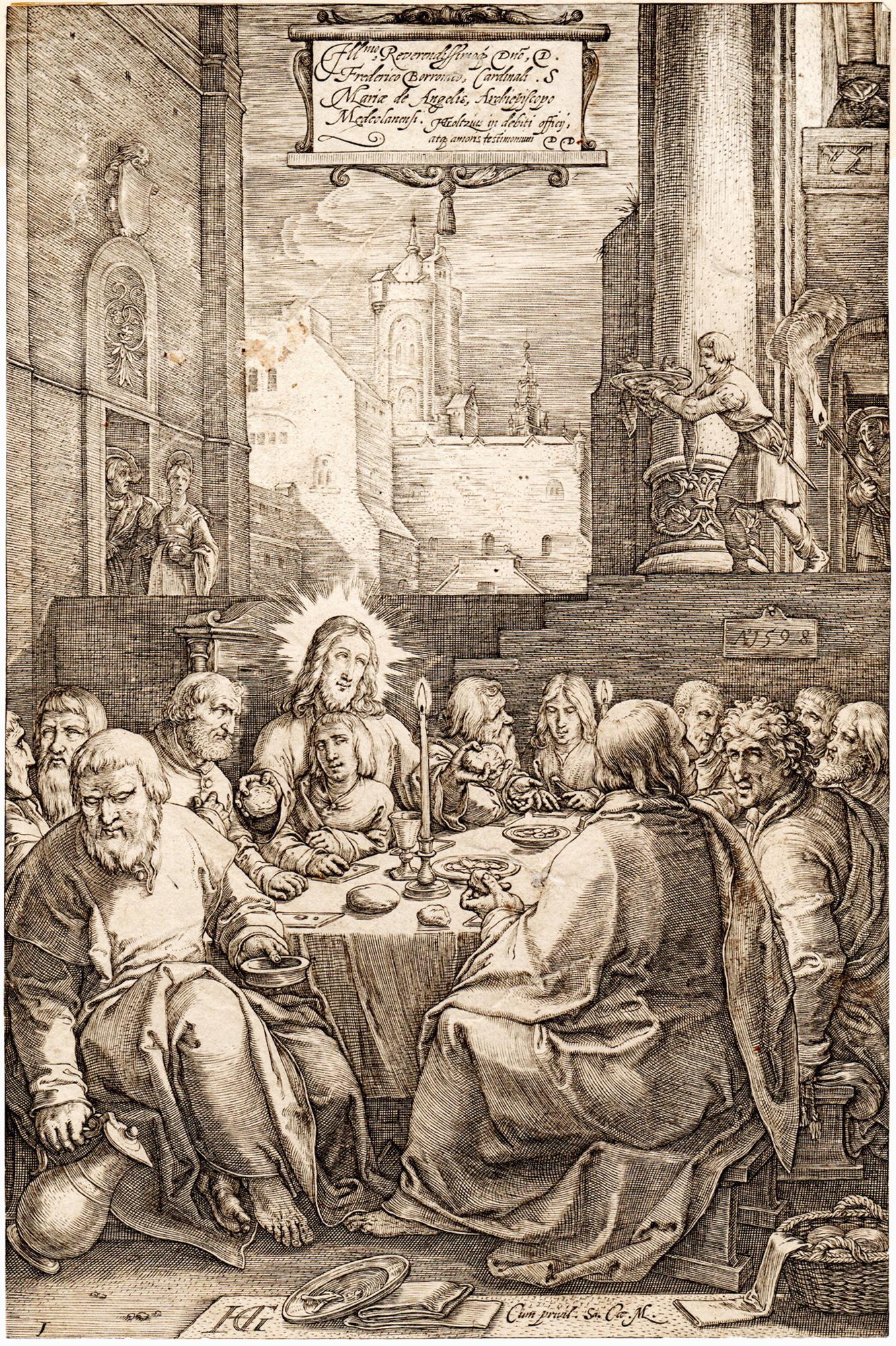

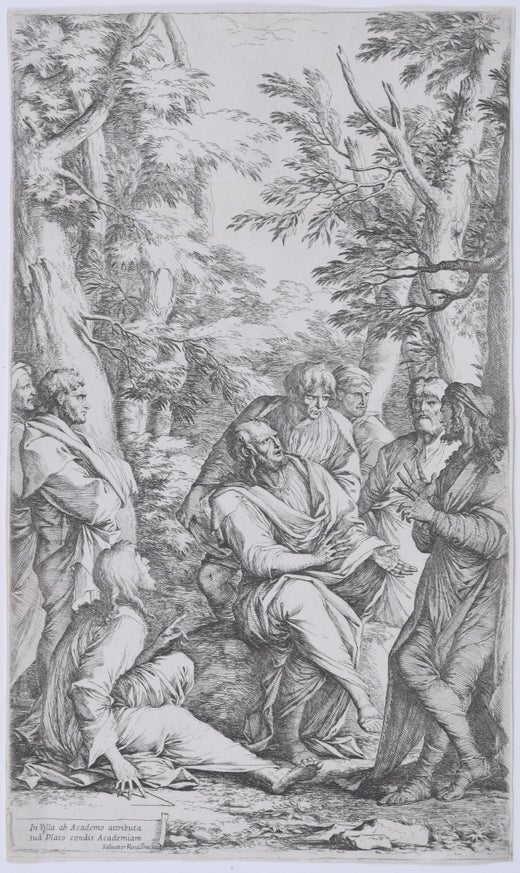
![The Garden of Love (after Peter Paul Rubens [1577-1640]](https://a.1stdibscdn.com/christoffel-jegher-1596-1652-3-netherlands-prints-works-on-paper-the-garden-of-love-after-peter-paul-rubens-1577-1640-for-sale/a_140/a_147163221719706543029/FA1849_montage_master.jpg?width=240)
